
<html><body><h1>Invitation to the exhibition Jiří Kroha – architect, painter, designer, theorist</h1></body></html>
Jiří Kroha (1893-1974) - architect, painter, designer, theorist - in the transformations of 20th century art
Museum of the City of Brno, Špilberk June 13 - August 19, 2007
Wroclaw Museum of Architecture, September 7 - October 31, 2007
Concept and authors of the exhibition: Marcela Macharáčková, Jindřich Chatrný
Project partners: Architekturzentrum Wien, Wroclaw Museum of Architecture
The Museum of the City of Brno began in 2005 a comprehensive processing of one of the largest legacies in its collections, the work of the versatile artist - architect Jiří Kroha.
Kroha was engaged in many artistic fields from a young age and left his mark in all of them with his distinctive talent. In 1918, shortly after graduating from the Brno University of Technology, his cubist design for the cabaret and night club Montmartre in Prague caught attention. In his cubo-expressive paintings, he achieved a fragmented representation of movement, bringing him closer to futurism.
From 1921, Kroha was involved in the activities of the Socialist Scene in Prague, co-creating its program, which aimed to make artistic presentations accessible to broad layers of (especially) non-wealthy audiences. In collaboration with playwright Arnošt Dvořák, he created several notable stage realizations (Matěj Poctivý, Hussites, New Oresteia, 1922-1923), enriching Czech scenography with many new impulses. His dynamic mobile stages were akin to Marinetti's futurist theater and Enrico Prampolini's magnetic stage.
In the following years (1923-1927), Kroha focused on architectural activity. As an employee of the Regional Administrative Committee, he designed several significant buildings in Mladá Boleslav (Regional Industrial School, District Health Insurance Office, Masaryk Institute of Social Care, and others), which were not fully understood by contemporary criticism that favored pure functionalist solutions due to their unconventional individual (non-plastic) approach. The architect concluded his stay in Mladá Boleslav with the project for the Exhibition of Northern Bohemia, which ranks among the most significant exhibition events of the interwar period in our country, following the Exhibition of Contemporary Culture in Czechoslovakia in Brno. The significance of the Mladá Boleslav complex of buildings by Jiří Kroha has only been appreciated in recent times. At the end of 1926, the president of the republic T. G. Masaryk appointed him an extraordinary professor at the Czech Technical University in Brno. Kroha contributed his projects to the realization of the Exhibition of Contemporary Culture in Czechoslovakia in Brno (Pavilion Antropos, exhibitions Science, Spiritual and Technical Culture, and Higher Education) and the project for a family house in the colony New House, which was created as a model colony of modern housing for the occasion of the Exhibition of Contemporary Culture in Brno.
In the following years, Kroha's leftist orientation strengthened. After visiting the Soviet Union in 1930, he became an enthusiastic promoter of socialist governance and Soviet modern housing construction. He dealt with the issue of the smallest apartment and introduced the teaching of sociology of architecture at the school. This activity brought him closer to Prague’s leftist architects and theorist Karel Teige. From 1930 to 1933, Kroha, together with his students, developed an extensive cycle of collages - Sociological Fragment of Housing, in which he visually depicted social conditions in interwar Czechoslovakia through images and graphs. For his pro-Soviet lecturing activities, he was sentenced in 1934 and subsequently dismissed from his position as a professor at the Czech Technical University in Brno. Although Kroha was rehabilitated in 1937 due to pressure from a petition by prominent European artists, he was again stripped of his position after the occupation in 1939 and imprisoned in concentration camps in Dachau and Buchenwald for a year. Between 1940 and 1945, Kroha's late painting work emerged, drawing inspiration from cubism and surrealism.
Kroha was among the critics of the Stalinist regime in 1938. He sided with Teige and Czech surrealists for artistic freedom against the pro-Stalinist-oriented group of Czech intellectuals (L. Štoll, J. Fučík, V. Nezval, Z. Nejedlý, and others).
After the war, he enthusiastically engaged in building a new socialist society. The success of the Slavic Agricultural Exhibition in Prague (1947-1948) along with his interwar leftist activities made him a favored architect of the new communist regime. In 1948, Jiří Kroha was appointed a national artist. Within the framework of the newly state-directed design offices, Stavoprojekt, an Atelier of National Artist Jiří Kroha was established with the task of designing nationally significant buildings. ANU designed several buildings in the new style of socialist realism by 1956 (when it was dissolved) (New Socialist Town of Nová Dubnica, Cultural and Educational Houses in Mnichovo, Hrůšov, and Petřvald, completion of the Stalingrad-Bělský Les housing estate in Ostrava, the First Czechoslovak Spartakiad, and others). By the mid-1950s, Kroha had to face criticism of his master studio. The architect openly spoke out against technocrats introducing typification and panel construction into building. In the 1960s, the artist, alongside art historian Josef Císařovský, worked on the processing of his interwar work. In his own exhibitions, catalogs, and the 1967 monograph, Kroha reaffirmed his connection to the interwar avant-garde. During this time, he also focused on Soviet constructivist architecture. In 1973, he published, with Jiří Hrůza, the book Soviet Architectural Avant-garde. Jiří Kroha, even though he criticized the shortcomings and errors of the communist system, remained its advocate and a convinced promoter throughout his life.
The last comprehensive exhibition of Jiří Kroha's work took place in 1973 at the House of Art of the City of Brno on the occasion of the artist's 80th birthday.
The legacy of Jiří Kroha in the collections of the Museum of the City of Brno consists of several thousand items - architectural, painting, scenographic works, Sociological, Economic, and Humanistic Fragment of Housing, as well as part of the written legacy of the Atelier of National Artist Jiří Kroha.
Nine art historians from various countries (Czech Republic, Austria, Switzerland, and the USA) approached the thorough processing of the architectural, painting, scenographic, design, and theoretical work of Jiří Kroha. The project, titled "Jiří Kroha (1893-1974) - architect, painter, designer, theorist - in the transformations of 20th century art," was supported by the European Union from the Culture 2000 program, the Ministry of Culture of the Czech Republic, and the South Moravian Region. Its output is the first monograph evaluating all periods of the artist's life work and an exhibition that will present the work of Jiří Kroha in its comprehensive breadth. Jiří Kroha is one of the significant personalities of Czechoslovak culture in the first half of the 20th century. His work underwent a complex evolution and was part of stylistic transformations and events that moved our youngest cultural history.
Museum of the City of Brno, Špilberk June 13 - August 19, 2007
Wroclaw Museum of Architecture, September 7 - October 31, 2007
Concept and authors of the exhibition: Marcela Macharáčková, Jindřich Chatrný
Project partners: Architekturzentrum Wien, Wroclaw Museum of Architecture
The Museum of the City of Brno began in 2005 a comprehensive processing of one of the largest legacies in its collections, the work of the versatile artist - architect Jiří Kroha.
Kroha was engaged in many artistic fields from a young age and left his mark in all of them with his distinctive talent. In 1918, shortly after graduating from the Brno University of Technology, his cubist design for the cabaret and night club Montmartre in Prague caught attention. In his cubo-expressive paintings, he achieved a fragmented representation of movement, bringing him closer to futurism.
From 1921, Kroha was involved in the activities of the Socialist Scene in Prague, co-creating its program, which aimed to make artistic presentations accessible to broad layers of (especially) non-wealthy audiences. In collaboration with playwright Arnošt Dvořák, he created several notable stage realizations (Matěj Poctivý, Hussites, New Oresteia, 1922-1923), enriching Czech scenography with many new impulses. His dynamic mobile stages were akin to Marinetti's futurist theater and Enrico Prampolini's magnetic stage.
In the following years (1923-1927), Kroha focused on architectural activity. As an employee of the Regional Administrative Committee, he designed several significant buildings in Mladá Boleslav (Regional Industrial School, District Health Insurance Office, Masaryk Institute of Social Care, and others), which were not fully understood by contemporary criticism that favored pure functionalist solutions due to their unconventional individual (non-plastic) approach. The architect concluded his stay in Mladá Boleslav with the project for the Exhibition of Northern Bohemia, which ranks among the most significant exhibition events of the interwar period in our country, following the Exhibition of Contemporary Culture in Czechoslovakia in Brno. The significance of the Mladá Boleslav complex of buildings by Jiří Kroha has only been appreciated in recent times. At the end of 1926, the president of the republic T. G. Masaryk appointed him an extraordinary professor at the Czech Technical University in Brno. Kroha contributed his projects to the realization of the Exhibition of Contemporary Culture in Czechoslovakia in Brno (Pavilion Antropos, exhibitions Science, Spiritual and Technical Culture, and Higher Education) and the project for a family house in the colony New House, which was created as a model colony of modern housing for the occasion of the Exhibition of Contemporary Culture in Brno.
In the following years, Kroha's leftist orientation strengthened. After visiting the Soviet Union in 1930, he became an enthusiastic promoter of socialist governance and Soviet modern housing construction. He dealt with the issue of the smallest apartment and introduced the teaching of sociology of architecture at the school. This activity brought him closer to Prague’s leftist architects and theorist Karel Teige. From 1930 to 1933, Kroha, together with his students, developed an extensive cycle of collages - Sociological Fragment of Housing, in which he visually depicted social conditions in interwar Czechoslovakia through images and graphs. For his pro-Soviet lecturing activities, he was sentenced in 1934 and subsequently dismissed from his position as a professor at the Czech Technical University in Brno. Although Kroha was rehabilitated in 1937 due to pressure from a petition by prominent European artists, he was again stripped of his position after the occupation in 1939 and imprisoned in concentration camps in Dachau and Buchenwald for a year. Between 1940 and 1945, Kroha's late painting work emerged, drawing inspiration from cubism and surrealism.
Kroha was among the critics of the Stalinist regime in 1938. He sided with Teige and Czech surrealists for artistic freedom against the pro-Stalinist-oriented group of Czech intellectuals (L. Štoll, J. Fučík, V. Nezval, Z. Nejedlý, and others).
After the war, he enthusiastically engaged in building a new socialist society. The success of the Slavic Agricultural Exhibition in Prague (1947-1948) along with his interwar leftist activities made him a favored architect of the new communist regime. In 1948, Jiří Kroha was appointed a national artist. Within the framework of the newly state-directed design offices, Stavoprojekt, an Atelier of National Artist Jiří Kroha was established with the task of designing nationally significant buildings. ANU designed several buildings in the new style of socialist realism by 1956 (when it was dissolved) (New Socialist Town of Nová Dubnica, Cultural and Educational Houses in Mnichovo, Hrůšov, and Petřvald, completion of the Stalingrad-Bělský Les housing estate in Ostrava, the First Czechoslovak Spartakiad, and others). By the mid-1950s, Kroha had to face criticism of his master studio. The architect openly spoke out against technocrats introducing typification and panel construction into building. In the 1960s, the artist, alongside art historian Josef Císařovský, worked on the processing of his interwar work. In his own exhibitions, catalogs, and the 1967 monograph, Kroha reaffirmed his connection to the interwar avant-garde. During this time, he also focused on Soviet constructivist architecture. In 1973, he published, with Jiří Hrůza, the book Soviet Architectural Avant-garde. Jiří Kroha, even though he criticized the shortcomings and errors of the communist system, remained its advocate and a convinced promoter throughout his life.
The last comprehensive exhibition of Jiří Kroha's work took place in 1973 at the House of Art of the City of Brno on the occasion of the artist's 80th birthday.
The legacy of Jiří Kroha in the collections of the Museum of the City of Brno consists of several thousand items - architectural, painting, scenographic works, Sociological, Economic, and Humanistic Fragment of Housing, as well as part of the written legacy of the Atelier of National Artist Jiří Kroha.
Nine art historians from various countries (Czech Republic, Austria, Switzerland, and the USA) approached the thorough processing of the architectural, painting, scenographic, design, and theoretical work of Jiří Kroha. The project, titled "Jiří Kroha (1893-1974) - architect, painter, designer, theorist - in the transformations of 20th century art," was supported by the European Union from the Culture 2000 program, the Ministry of Culture of the Czech Republic, and the South Moravian Region. Its output is the first monograph evaluating all periods of the artist's life work and an exhibition that will present the work of Jiří Kroha in its comprehensive breadth. Jiří Kroha is one of the significant personalities of Czechoslovak culture in the first half of the 20th century. His work underwent a complex evolution and was part of stylistic transformations and events that moved our youngest cultural history.
Marcela Macharáčková
The English translation is powered by AI tool. Switch to Czech to view the original text source.
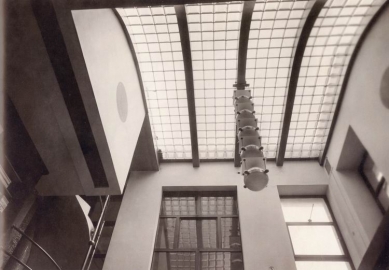
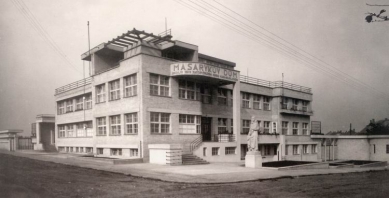
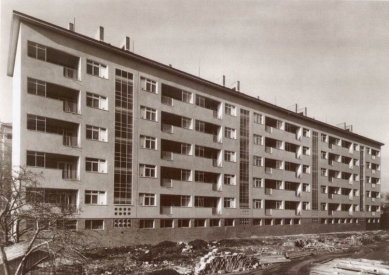
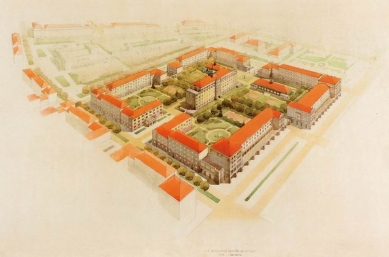
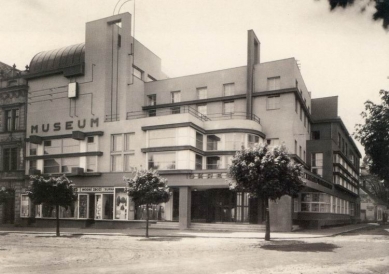
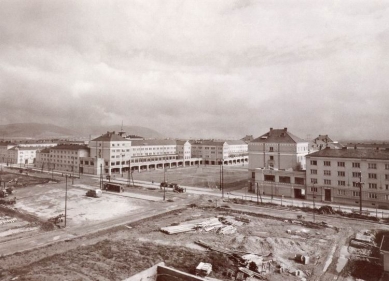
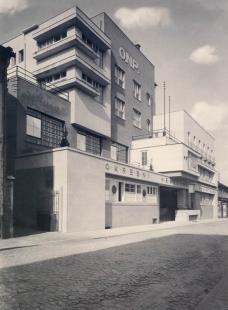
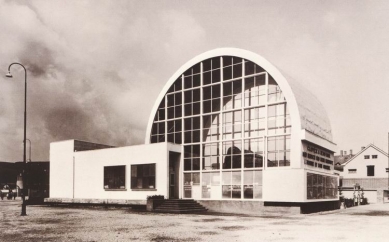
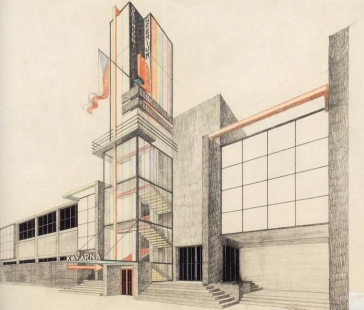
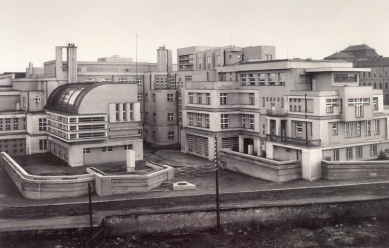
0 comments
add comment






